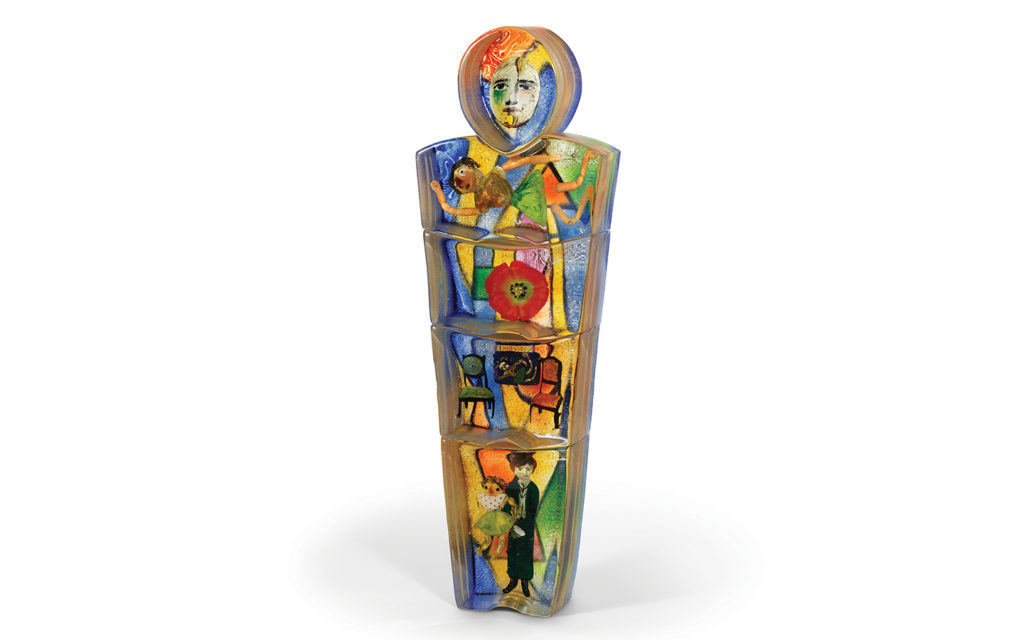What is it?
Artist
Stephanie Trenchard (b. Champaign, Illinois 1962)
Title
Falling Apart: Emmy Hennings
Year
2018
Medium
Sand-cast and hot-sculpted glass and enamel paint
Dimensions
32 x 10 3/8 x 4 3/8 in.
Credit line
Purchased 2018, James and Karen Hyde Foundation
About the Work
About
When Stephanie Trenchard began working in glass in 1998, the demographics of glass art were very different from those encountered thirty years earlier. Although more women than ever were working in the industry, Trenchard was astounded to see that educational materials still extolled the accomplishments of male artists. She subsequently has devoted her career to documenting women’s contributions to the arts.
Trained in painting, Trenchard turned to glass when she and her husband, sculptor Jeremy Popelka, moved from San Francisco to share a studio in Wisconsin’s Door County. Trenchard’s sculptures unite sand casting (Popelka’s specialty, which employs sand as mold material) with hot sculpting techniques (where, without blowing, Trenchard fabricates the form by gathering a gob of glass at the end of a solid metal rod and shaping it with special tools). Trenchard’s hot-sculpted figures are often placed in front of background imagery formed from stencils. She attributes her color palette to the work of French multidisciplinary modernist artist Sonia Delaunay.
Falling Apart: Emmy Hennings celebrates the life of Emily Ball-Hennings, an itinerant German performer, poet, and puppeteer (1985–1948) whose husband, Hugo Ball, was a well-known Dadaist. Mesmerized by puppetry which she sees as movable sculpture, Trenchard saw strong parallels between Hennings’s life and her own, since both women’s careers were tightly enmeshed with those of their husbands.
Like much of her work, Falling Apart: Emmy Hennings consists of a totemlike form divided into several sections that unite to form a portrait of the subject. While the top section is intended to portray Hennings’s soul, three of the other sections reference her profession. The third, however, contains an image of a poppy, which, while commonly symbolizing the soul’s eternal life, here represents the sensuous attributes of the flesh.—Davira S. Taragin

